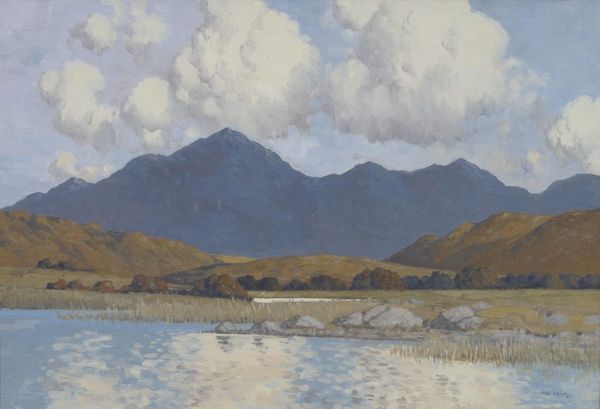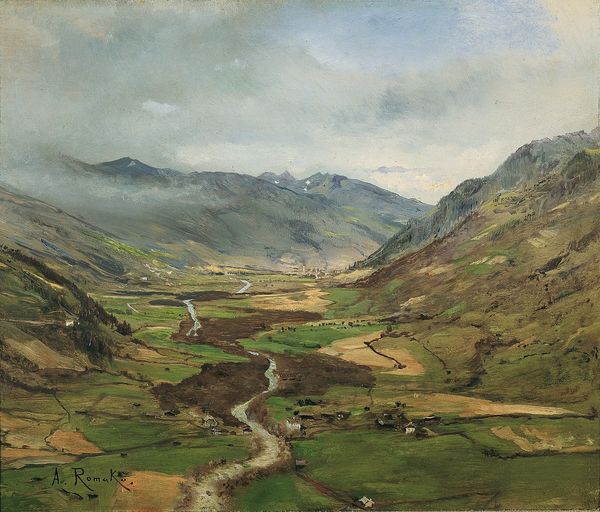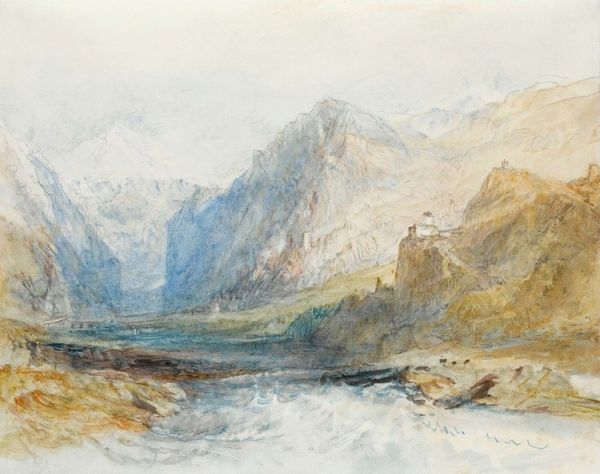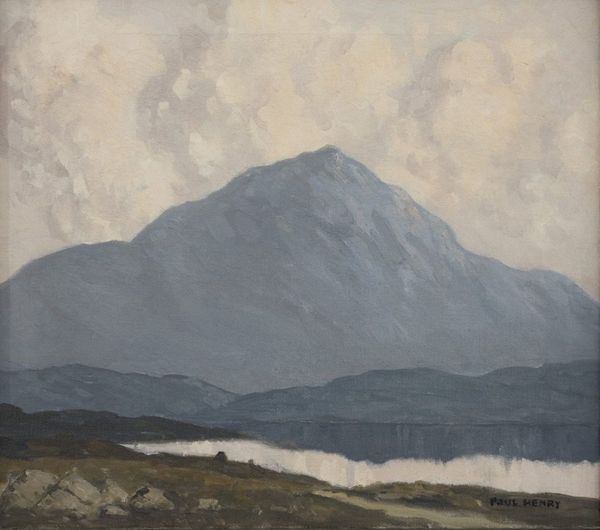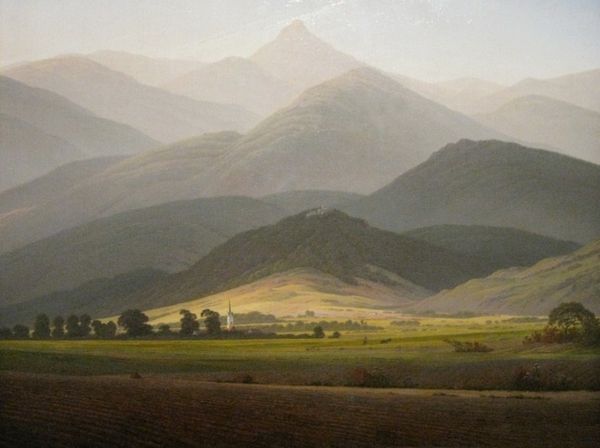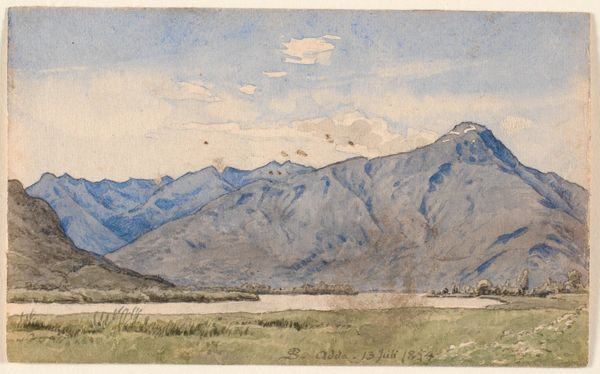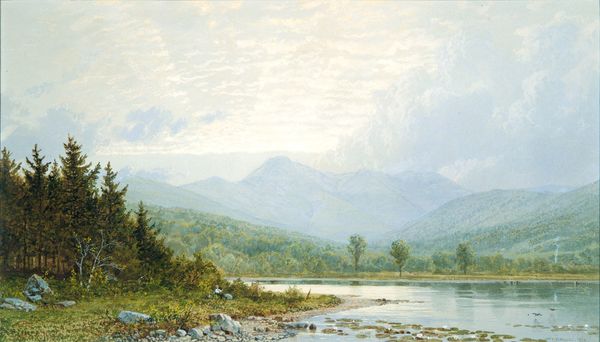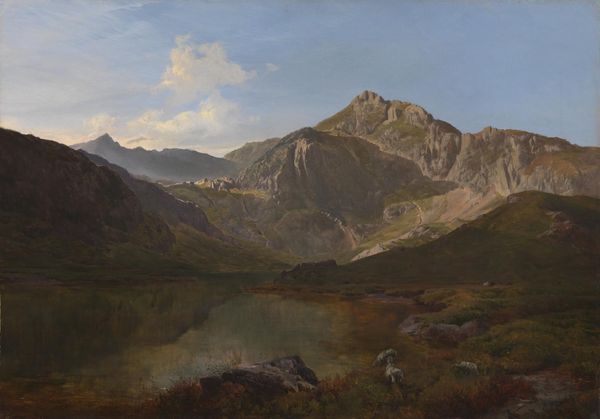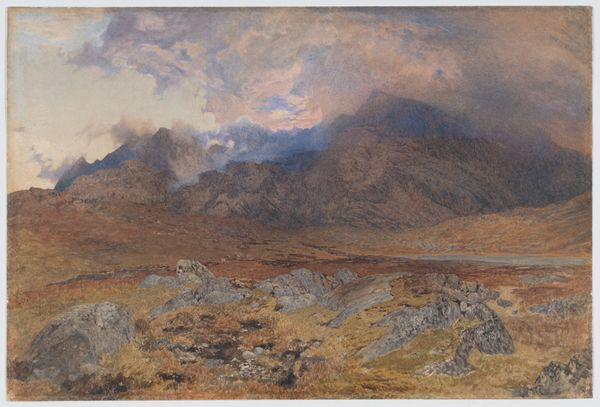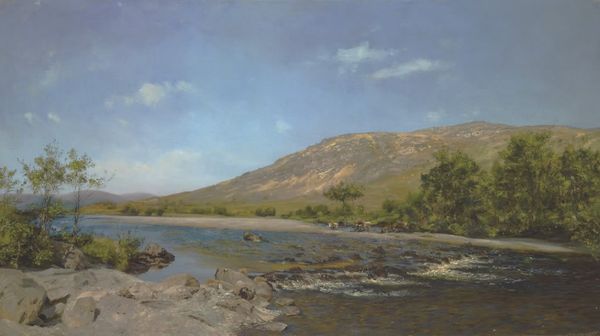
drawing
#
drawing
#
abstract painting
#
impressionist painting style
#
impressionist landscape
#
possibly oil pastel
#
nature
#
oil painting
#
fluid art
#
painting painterly
#
watercolour illustration
#
watercolor
Dimensions: 12 x 17 7/8 in. (30.48 x 45.4 cm)
Copyright: No Copyright - United States
Curator: Let's discuss this artwork titled "Westmorland - The Lake District" attributed to Arthur Tucker from approximately the 20th century, currently residing here at the Minneapolis Institute of Art. The scene unfolds using what appears to be watercolor techniques. What strikes you immediately about this piece? Editor: The prevailing mood for me is… contemplation, maybe even a touch melancholic. The muted colors and looming mountains suggest a feeling of insignificance in the face of nature's grandeur. It also reads like an environmental commentary, a depiction of an untouched natural setting, possibly reflecting a nostalgia for landscapes being encroached upon by human activity, particularly by the 20th century. Curator: That's interesting. I see your point. Considering the social context of landscape painting in the early 20th century, artists were increasingly turning to nature as a subject. Especially landscapes untouched by urbanization came to the forefront, becoming vehicles for expressing national identity and ideals, sometimes reinforcing conservative social structures or looking wistfully to an imagined past. This artwork participates in the public dialogue about our relationship with the environment. Editor: Precisely. And it invites us to reflect on land ownership, accessibility, and the romanticized depiction of rural life, versus the realities faced by rural communities—often obscured in favor of idyllic imagery. The sublime here flirts with environmental concern. It raises awareness that the so-called “untouched nature” might not have even existed back then as it looks on the canvas. Curator: Looking closer at the formal elements, the artist's delicate rendering of light on the water and mountains gives it a soft, ethereal quality. How do you think the artist's technique impacts the overall reading of the work? The composition guides the viewer’s eye from the tranquil foreground of the waters up toward the monumental mountain ranges, as a symbolic gesture? Editor: Absolutely. The skillful rendering contributes to that sense of serenity and wonder, sure. The detail in the mountains makes them feel accessible while still preserving their magnificence. But I find that it’s maybe too easy to simply consume landscapes like this visually without actually reckoning with what is missing or glossed over. It becomes important for viewers, particularly now, to be reflexive on what natural landscapes actually entail, even just beyond their pictorial frame. Curator: An excellent point. It definitely challenges us to consider the power dynamics embedded in the seemingly benign appreciation of beauty, a poignant commentary we can still take away today. Editor: Yes, something about making beauty productive towards political ecological thinking.
Comments
No comments
Be the first to comment and join the conversation on the ultimate creative platform.
